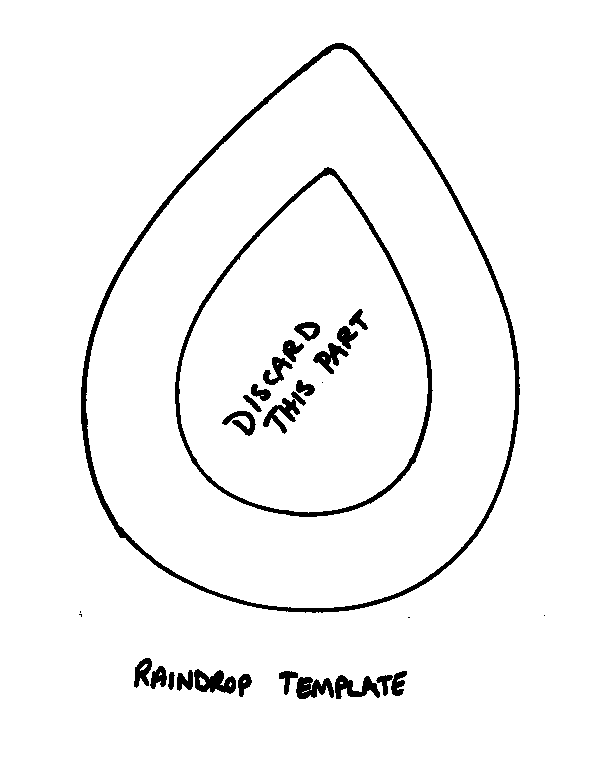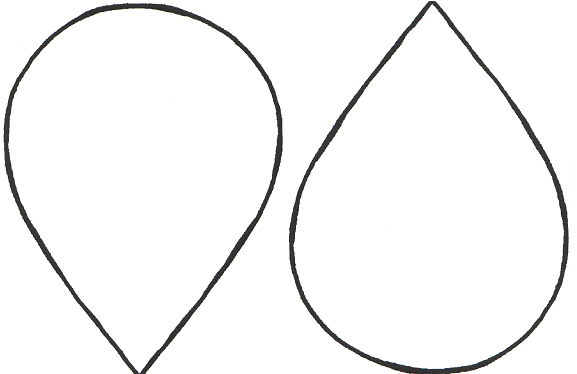
The raindrop will continue falling until it reaches the ground. If it gets any larger than 4 millimeters, however, it will usually split into two separate drops. We can call the growing droplet a raindrop as soon as it reaches the size of 0.5mm in diameter or bigger. As it falls it eats up even more droplets. Soon the droplet is so heavy that the cloud (or the room) can no longer hold it up and it starts falling. This new bigger droplet will bump into other smaller droplets and become even bigger - this is called coalescence.

If one droplet bumps into another droplet, the bigger droplet will "eat" the smaller droplet.
RAINDROP SHAPE TEMPLATE FULL
Picture a huge room full of tiny droplets milling around. (The particles range in size, therefore, the droplets range in size.) However, these droplets are too light to fall out of the sky. Each particle (surrounded by water) becomes a tiny droplet between 0.0001 and 0.005 centimeter in diameter. Condensation occurs when the water vapor wraps itself around the tiny particles. In order to have rain you must have a cloud - a cloud is made up of water in the air (water vapor.) Along with this water are tiny particles called condensation nuclei - for instance, the little pieces of salt leftover after sea water evaporates, or a particle of dust or smoke.


How is a raindrop made? How big can a raindrop be? Before we can discuss raindrop sizes, we must understand what a raindrop is. In science we learn that one question often leads to another, or several others. Sources/Usage: Some content may have restrictions.


 0 kommentar(er)
0 kommentar(er)
